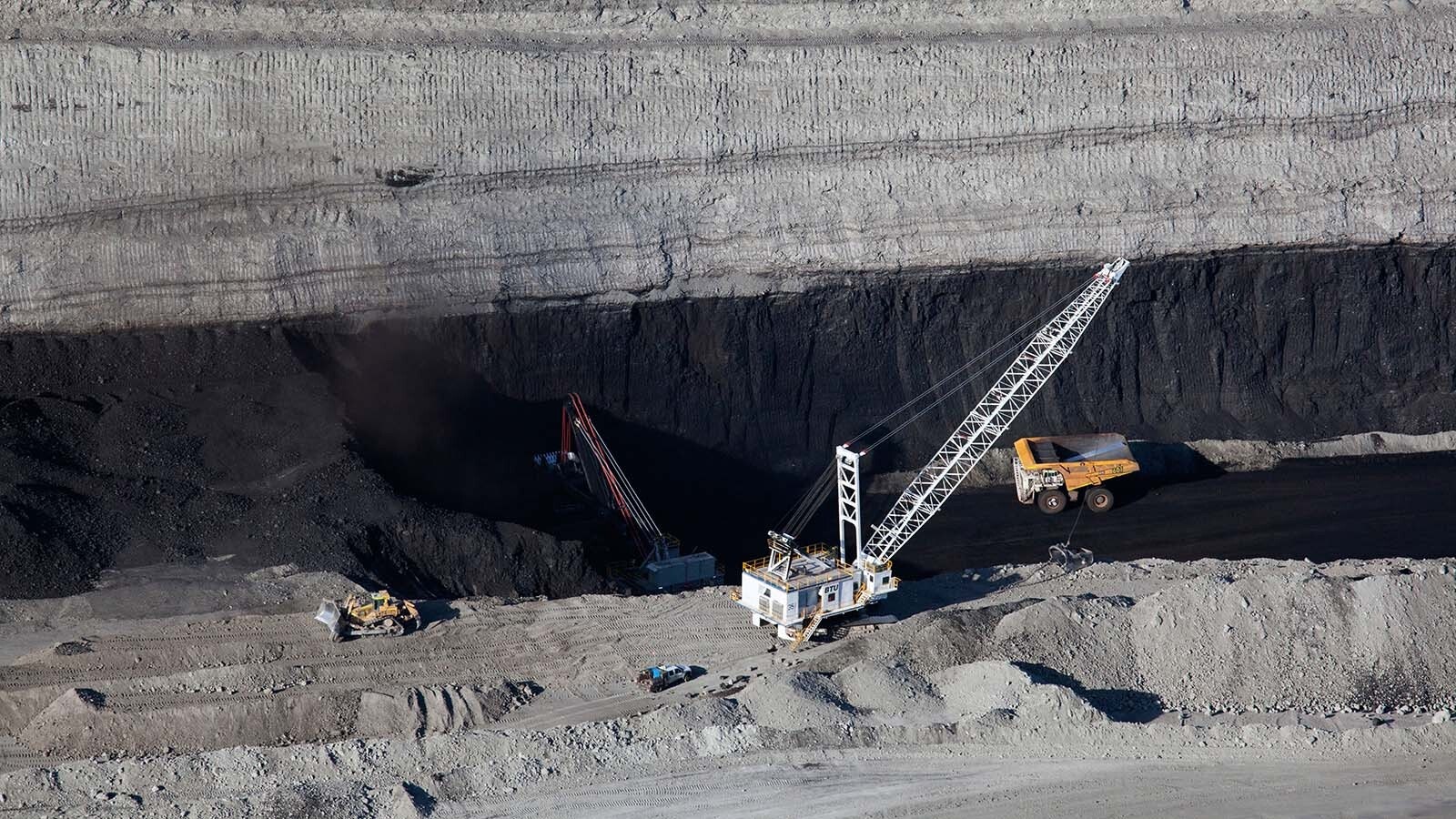As coal markets continue to decline around the country, Wyoming’s energy industry could be in for a rough year, a University of Wyoming economist said.
“From 2018 to 2019, Wyoming coal production was down 10 percent, which is just a little shy of 31 million tons,” said Rob Godby, the University of Wyoming director of the Energy Economics and Public Policies Center. “I expect we’ll continue to see that trend in 2020.”
Wyoming produced about 270 million tons of coal in 2019, a low not seen since the 1970s, Godby said.
“People will think the Blackjewel LLC closure was the sole reason, and it was a factor,” he explained. “But if you look at mines across the state, production was down throughout the year.”
Power producers nationwide are turning to natural gas and renewable energy sources, and Godby said they likely won’t look back.
“All Wyoming coal is used pretty much for electricity generation, and coal use in electricity generation has halved,” he explained. “Coal is no longer competitive with natural gas and renewables. The cost of renewable electricity development has plummeted in the past decade, and natural gas is currently the cheapest fossil fuel.”
The short-term outlook may be bleak, but he said there are several developments underway in 2020 which could impact the industry’s long-term outlook.
Governor’s Initiatives
Gov. Mark Gordon said coal may be in decline, but it is still an essential ingredient in U.S. energy production and could one day become something more.
“The national conversation talks about climate change, talks about renewables, talks about new technology as if there is no bright future for coal,” Gordon told Cowboy State Daily. “We have a solution to all of those things. We have carbon capture sequestration. We have the opportunity to move to bio energy carbon capture technology. And we’ll continue to make coal a viable commodity in the future.”
There is a demand for coal the state can count on, so the decline is less of a cliff and more of a plateau, he said.
Gordon started the Power Wyoming planning effort in 2019 to forecast multiple scenarios for future energy markets and this year he is requesting $25 million from the legislature for the Energy Commercialization Program.
“In Wyoming, there are a lot of little pieces that are all part of solving the puzzle,” Gordon said. “My effort (with the program) is to demonstrate our commitment to this to attract investors and build confidence in the private sector.”
The money is being requested from the Strategic Investments and Projects Account, and could be applied to providing a focused approach to researching new coal-reliant technologies in collaboration with UW and counties supportive of alternate coal-usage research.
Carbon capture research occurring throughout the state could be instrumental to securing Wyoming’s future coal production, Gordon said. But he added it will take time to reap the benefits of those studies.
Looking at 2020 as a whole, Gordon said the situation is dire, but not without hope.
“I don’t think (the coal decline) is going to be decimating to Wyoming,” he said. “But, it’s going to be concerning.”
Sovereign immunity
One item high on Godby’s watch list is the unprecedented case of a coal company owned by a sovereign nation operating mines on U.S. soil.
The Navajo Transitional Energy Company (NTEC) was created by the Navajo Nation to operate mines within its boundaries.
But in 2019, the company acquired Cloud Peak Energy’s Cordero Rojo and Antelope mines in the Powder River Basin as well as mines in Montana.
At the Powder River Basin Resource Council, an organization dedicated to advocating for responsible energy development in the basin, staff attorney Shannon Anderson has kept a close eye on the NTEC situation.
“There’s a real concern and a practical problem for those of us in Wyoming with this company operating the mines and potentially owning them,” Anderson said. “If they maintain sovereign immunity, it may block legal redress on the part of citizens, neighbors, workers and government entities trying to collect taxes and royalties.”
While the Wyoming Department of Environmental Quality has yet to approve permits for the company, NTEC is operating the mines under Cloud Peak’s permits, which Anderson said is problematic as well.
“Cloud Peak is in bankruptcy right now, doesn’t have any assets and isn’t really a company that can be held responsible either,” she explained. “(NTEC) can kind of operate under Cloud Peak’s permits forever.”
Despite being created by the Navajo Nation, the nation announced last year it will not back NTEC’s $400 million reclamation liability for the mines.
Too many mines
Despite experiencing a major decline in coal production, no Wyoming mines have closed, Godby said.
“If you look at the Powder River Basin, it’s like a Wile E. Coyote moment,” he said. “We’ve already run off the cliff, and we haven’t realized it yet. We’ve got the same number of mines chasing fewer and fewer customers, which is not a sustainable outcome.”
Two companies — Peabody Energy and Arch Coal — control more than 50 percent of the basin’s production. In 2019, the companies announced a joint venture to consolidate their Western operations.





